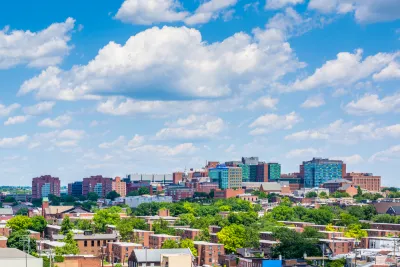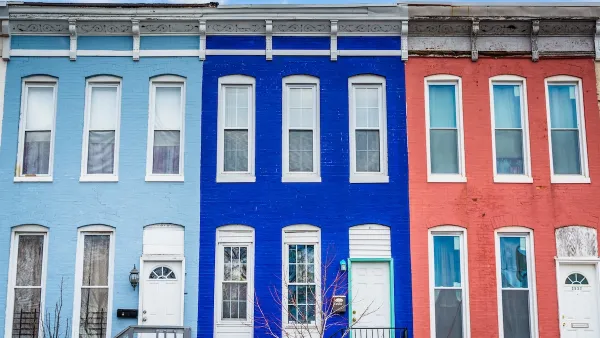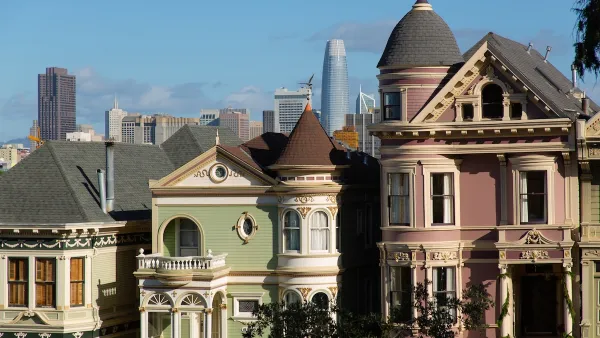If those in health care seek to develop new ways to help patients stay in their homes, they must also find ways to temper how they affect communities in which they reside.

Over the course of my medical training I have worked in cities that hold the dual distinctions of being both home to some of the largest medical institutions in the country as well as the sites of increasingly untenable affordable housing crises. I have seen countless patients bear the consequences of unsafe or unstable housing on their bodies and minds: the mold exacerbating their asthma, the medication missed because of stays in shelter leading to uncontrolled diabetes, the missed rent payments and threatening landlords leading to gnawing anxiety. These realities make clear that safe, affordable housing is a necessary foundation for good health, a fact that is now only further emphasized by the need for safe places to self-isolate during the COVID-19 pandemic.
However, as I pursued my training in Baltimore and New York City, it also became clear that medical institutions and health systems bore some responsibility in creating the pressures that drove displacement in the first place. Just as it was impossible to ignore the health impacts of poor housing, it was also increasingly difficult to ignore announcements of new multimillion dollar developments bearing the health systems’ names, the contrast between steel and glass research buildings and the rows of vacant houses just beyond their lawns. Participating in grassroots efforts to support fair development and sustainable affordable housing, led by groups such as the Baltimore Fair Development Roundtable and Northwest Bronx Community and Clergy Coalition, I heard stories from those living in the shadow of the hospital of rising rents and changing neighborhoods; I saw the looks of suspicion on community members’ faces when the hospital’s name arose in conversation.
Over the last few years there has been a growing commitment from health care institutions to the development of affordable housing. It’s a prospect that is both exciting and long overdue: the added financial and political weight of these anchor institutions as well as the opportunity for new collaborations between housing and health providers could improve access to both essential needs.
In moving forward with these initiatives, however, it is important that we consider the ways in which health care institutions already shape the communities in which they find themselves. The way that medical institutions actively engage in development, how their workforce shapes the characteristics of the neighborhoods around them, and how changing dynamics of health care service provision affect the vitality of neighborhoods must be reckoned with if health care systems decide to commit themselves to supporting true affordable housing.
While health care institutions may just now be entering the world of affordable housing, they are by no means new to community development. In 2001 ....
FULL STORY: Health Care Institutions Must Acknowledge Their Role in Neighborhood Change

Analysis: Cybertruck Fatality Rate Far Exceeds That of Ford Pinto
The Tesla Cybertruck was recalled seven times last year.

National Parks Layoffs Will Cause Communities to Lose Billions
Thousands of essential park workers were laid off this week, just before the busy spring break season.

Retro-silient?: America’s First “Eco-burb,” The Woodlands Turns 50
A master-planned community north of Houston offers lessons on green infrastructure and resilient design, but falls short of its founder’s lofty affordability and walkability goals.

Test News Post 1
This is a summary

Analysis: Cybertruck Fatality Rate Far Exceeds That of Ford Pinto
The Tesla Cybertruck was recalled seven times last year.

Test News Headline 46
Test for the image on the front page.
Urban Design for Planners 1: Software Tools
This six-course series explores essential urban design concepts using open source software and equips planners with the tools they need to participate fully in the urban design process.
Planning for Universal Design
Learn the tools for implementing Universal Design in planning regulations.
EMC Planning Group, Inc.
Planetizen
Planetizen
Mpact (formerly Rail~Volution)
Great Falls Development Authority, Inc.
HUDs Office of Policy Development and Research
NYU Wagner Graduate School of Public Service




























